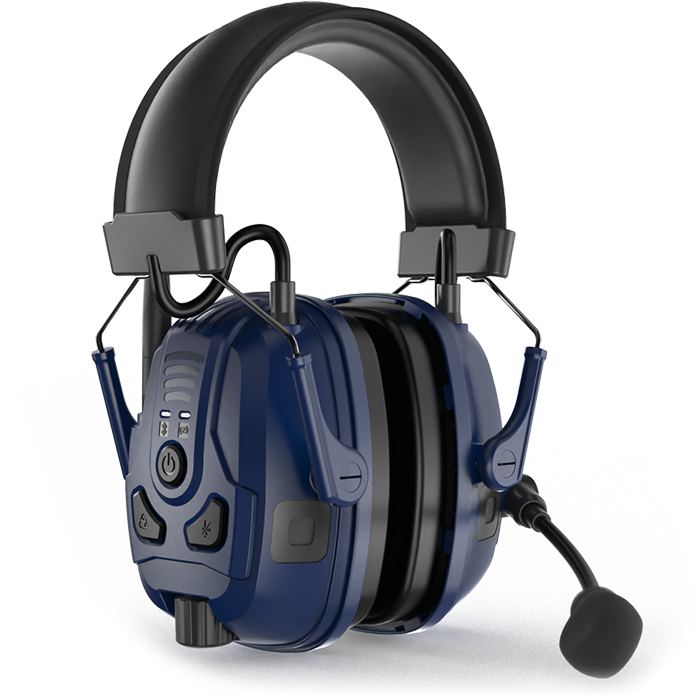How the Pandemic Has Changed Demand in the PPE Market
Cardo Crew’s Product Manager David Haviv looked at the recent trends and changes in the PPE and Wireless Communication industries and discussed how end user demand changed during the pandemic that caught everyone by surprise.
How has communication among team members changed over the last few years?
David: Team communication is extremely important for team members working in challenging environments. In the past (and even today in some cases) most communication was done through shouting, gesturing , using a 2-way radio or mobile phone (if there was cellular coverage). However, when dealing with challenging environments where hands are required to complete the tasks (such as the forestry industry where heavy machinery is being used to cut trees, tractor are being driven around, etc.) there was a growing demand for hands-free communication.
New solutions for team communication were developed, including Full Duplex, or Voice Activation which made communicating safer and more efficient. In addition, awareness for workers safety increased and so did the desire for a solution offering full duplex, and reliable communication.
What trends do you see in wireless technology systems?
David: There are several trends in the industry. For one, we can see more and more users moving from half duplex (such as 2-way radios) to full duplex communication in which several team members can speak at the same time, without needing to constantly push a PTT button to talk. Another trend is using technologies that don’t require base stations. As a results, the use of DECT is showing signs of decline since it requires base stations to work.
Another need that is emerging is easy set-up. At the end of the day people want something that is quick, easy to implement and dynamic.
From your experiences, what are PPE manufacturers asking for these days and what are end consumers requesting from PPE manufacturers?
David: The requirements of PPE manufacturers and end user are actually quite similar with PPE manufacturers trying to offer what the end-user needs. These requirements are as follows:
- A communication device for teams in challenging environment
- Hearing protection capabilities, both passive (foam factor) and active (tactical microphones picking up sounds from the environment to enable situational awareness and reduce loud sounds that go beyond 82dB)
- The communication technology should be robust, without a base station, full duplex, self-healing system and easy to set up.
- The device should be ergonomically designed, easy to wear and light
- A hands-free activation of commands to have your hands free for the actual tasks
- Entertainment such as music listening, phone connectivity or FM radio are added values that become increasingly more important.
Did Covid have any impact on the PPE or wireless communication industry?
David: Yes, it certainly did. Take medical teams and first responders for example. They had to equip themselves with additional forms of PPE, mainly masks and helmets to protect themselves against the virus. This however, made communication much more challenging. You would have team members standing one next to each other and not able to communicate because they were wearing layers of protection covering their faces. This is where wireless communication can come in and solve the problem.

How can specifically the CREW Headset be a game changer in the way professional teams work together?
David: The CREW Headset is a truly a game changer for professional teams that need to closely collaborate. By offering clear, full duplex, and robust communication everyone can speak with everyone without using their hands. The hands can remain free for the actual work that needs to be done. The headset can be activated just with your voice (for instance say “Hey Cardo, volume up” to increase the volume).
Situation awareness will protect workers’ hearing from loud noises, while letting through important sounds such as warning signals through tactical microphones inside the headset.
Even if part of the team is still using 2-way radios that is not an issue. You can connect the CREW Headset to the 2-way radio via cable or Bluetooth with ease. Bluetooth connectivity also allows you to connect the Headset to your mobile phone to make or answer calls and listen to music. The built in FM radio is an additional feature highly valued by end users.
What industries can benefit from such a product?
David: There are many industries that can benefit from the CREW Headset. I would say that basically almost every industry which requires team communication in challenging environments can benefit from our solution. Some of the more common use cases are forestry, machineries, oil &gas, construction and work at height.
How do companies go about integrating the Crew Headset into their product offering?
David: Companies looking to enrich their offering with our wireless intercom solution can contact us at info@cardocrew.com or via our website cardocrew.com. The Headsets can be customized to fit the look and feel of the respective company. Along with that we offer a mobile application that allows users to operate the Headsets from their mobile phones.
Cardo Crew works closely with all its partners to customize the solution, providing relevant material to ensure a successful launch of the product.
